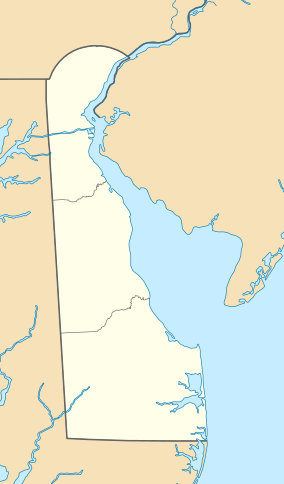Delaware National Estuarine Research Reserve facts for kids
Quick facts for kids Delaware National Estuarine Research Reserve |
|
|---|---|
|
IUCN Category IV (Habitat/Species Management Area)
|
|
| Location | Kent County, Delaware, Delaware, United States |
| Established | 1937 |
| Visitors | Open daily |
| Website | Delaware National Estuarine Research Reserve |
The Delaware National Estuarine Research Reserve is a special place in Delaware. It helps protect important natural areas. This reserve has two main parts. One part is near Blackbird Creek (39°23′47″N 75°37′04″W / 39.396275°N 75.617824°W). The other part is along the St. Jones River (39°05′33″N 75°26′44″W / 39.092466°N 75.445433°W).
The Blackbird Creek area has many freshwater wetlands, ponds, and forests. The St. Jones River area is mostly salt marsh and open water. These waters connect to the Delaware Bay.
What is the Delaware Estuary Reserve?
An estuary is where a river meets the sea. It's a mix of fresh and salt water. The Delaware National Estuarine Research Reserve studies these areas. They watch how the weather and water change over time.
Protecting Our Estuaries
The reserve does important research. They study how different things affect the estuary. This includes how land is used nearby. They also look at how many horseshoe crabs are in the area. These crabs are important for shorebirds that migrate.
Scientists at the reserve also study how to keep beaches healthy. They work to protect the natural habitats. They also check for pollution in the water. All this work helps keep the estuary healthy for plants and animals.
Learn and Explore at St. Jones Center
The St. Jones Center for Estuarine Studies is a great place to visit. It offers many fun and educational programs. These programs are for everyone, including school groups and families.
You can explore hands-on activities and exhibits. There are fish tanks to see local creatures. You can also learn about recycling. The center has special areas that show how nature can be restored.
The center also supports ongoing research. They offer field studies and citizen monitoring programs. This means you might even be able to help scientists! There are many ways for families, teachers, and students to get involved.


